Space-Time Evolution Characteristics of Deformation and Failure of Surrounding Rock in Deep Soft Rock Roadway
Abstract
:1. Introduction
2. Deformation and Failure Mode of Deep Soft Rock Roadway
2.1. Mechanical Model Criterion
2.2. Significant Deformation of the Roadway Envelope
2.3. Surrounding Rock Stress Concentration Appears
2.4. Internal Elastic-Plastic Failure Transition of the Surrounding Rock
3. Deformation and Failure Characteristics of Deep Soft Rock Roadways
3.1. Numerical Model Building
3.2. Deformation and Displacement Distribution Characteristics of the Surrounding Rock
3.3. Characteristics of Surrounding Rock Stress Distribution
3.4. Failure Characteristics of the Plastic Zone of the Surrounding Rock
4. Engineering Simulation Validation
4.1. Engineering Model Building
4.2. Analysis of Simulation Result
- Roof plate deformation is obvious
- 2.
- High stress concentration inside the roof plate
- 3.
- The roof plate rapidly transforms from elastic deformation to plastic deformation
5. Conclusions
- The simplified mechanical model analysis of the roof beam of the deep soft rock roadway shows that it has the characteristics of the maximum deflection in the middle of the roof beam, the concentration of shear stress at both ends of the roof beam, and the bending moment of the beam in the plastic state is obviously higher than the elastic limit bending moment. The deformation of the surrounding rock in the deep soft rock roadway has the features, such as significant displacement deformation, significant stress concentration, and sudden elastic-plastic failure, of the surrounding rock.
- Through FLAC3D numerical simulation analysis, it is found that the deformation of the surrounding rock in the displacement, stress, and plastic zone distribution of the deep soft rock roadway presents the following characteristics: the surrounding rock produces an overall inward extrusion deformation; the vertical stress in the surrounding rock is concentrated at the immediate roof and the immediate bottom; the horizontal stress is concentrated at the roadway gangs and the floor; the plastic deformation damage occurs at the roadway gangs first, and then extends to other parts.
- Using the simplified mechanical model of thin rectangular plate as an equivalent substitute for the deformation and failure of the roof plate surrounding rock under the setting background. The theoretical equations of deflection, bending moment, and stress of the model deformation are obtained by combining the elastic mechanics and geomechanics theories. The three-dimensional spatial demonstration cloud maps of the surrounding rock are derived and analyzed by Matlab software to reveal the spatial and temporal evolution law of the deformation and failure of the deep weak surrounding rock under the excavation and unloading perturbation. The simulation results above provide strong validation for the theoretical analysis and numerical simulation conclusions in the paper.
Author Contributions
Funding
Institutional Review Board Statement
Informed Consent Statement
Data Availability Statement
Conflicts of Interest
References
- Zuo, J.P.; Shi, Y.; Liu, D.J.; Sun, Y.J.; Chen, Y. The equivalent ellipse model and simulation analysis of Destressing by Cutting Groove in deep soft rock roadway. J. China Univ. Min. Technol. 2019, 48, 1–11. [Google Scholar]
- Wang, H.; Zheng, P.Q.; Zhao, W.J.; Tian, H.M. Application of a combined supporting technology with U-shaped steel support and anchor-grouting to surrounding soft rock reinforcement in roadway. J. Cent. South Univ. 2018, 25, 1240–1250. [Google Scholar] [CrossRef]
- Wang, X.F.; Li, S.; Wei, Y.Y.; Zhang, Y.Y. Analysis of surface deformation and settlement characteristics caused by tunnel excavation and unloading. Geofluids 2022, 2022, 5383257. [Google Scholar] [CrossRef]
- He, M.C.; Qi, G.; Chen, P.; Zhang, G.F.; Sun, X.M. Deformation and damage mechanisms and coupling support design in deep coal roadway with compound roof. China J. Rock Mech. Eng. 2007, 26, 987–999. [Google Scholar]
- He, M.C. Research on deep shaft hoisting dynamics. Adv. Mech. 2021, 51, 702–728. [Google Scholar]
- He, M.C.; Wang, B.; Tao, Z.G.; Qiao, Y.F.; Xiao, Y.M. Axial compression behavior of adaptive steel arch joint for large-deformation tunnels. Chi. J. Highway Transp. 2021, 34, 1–10. [Google Scholar]
- He, M.C.; Wang, Y.J.; Yang, J.; Gao, Y.B.; Gao, Q.; Wang, S.B. Zonal characteristics and its influence factors of working face pressure using roof cutting and pressure relief mining method with no pillar and roadway formed automaticly. J. China Univ. Min. Technol. 2018, 47, 1157–1165. [Google Scholar]
- He, M.C.; Ma, X.G.; Niu, F.L.; Wang, J.; Liu, Y.X. Adaptability research and application of rapid gob- side entry retaining formed by roof cutting and pressure releasing with composite roof and medium thick coal seam. Chin. J. Rock Mech. Eng. 2018, 37, 2641–2654. [Google Scholar]
- He, M.C.; Ma, Z.M.; Guo, Z.B.; Chen, S.Y. Key parameters of the gob-side entry retaining formed by roof cutting and pressure release in deep medium thickness coal seams. J. China Univ. Min. Technol. 2018, 47, 468–477. [Google Scholar]
- Yuan, Y.; Yuan, C.f.; Zhu, C.; Wang, P. Mechanical model and application of the deformation cylinder of the surrounding rock in the deep large section chamber. J. Min. Saf. Eng. 2020, 37, 338–348. [Google Scholar]
- Huang, Y.G.; Zhang, T.J. Plastic failure characteristics and grouting support of deep roadway with high ground stress. J. Min. Saf. Eng. 2019, 36, 949–958. [Google Scholar]
- Meng, Q.B.; Han, L.J.; Qiao, W.G.; Lin, D.g.; Lv, Y.X. Research on deformation failure characteristics of the deep high-stress soft rock roadways. J. Min. Saf. Eng. 2012, 29, 481–486. [Google Scholar]
- Ma, Y.; Jing, H.W.; Chen, Y.H. Numerical Si mulation of Failure Mechanism of Surrounding Rocks in Mining Induced Road way and Its Support. J. Min. Saf. Eng. 2007, 24, 109–113. [Google Scholar]
- Zuo, Y.J.; Tang, C.A.; Zhu, W.C.; Tan, Z.H. Analysis of the damage mechanism of deep rock tunnel under dynamic disturbance. J. China Coal Soc. 2006, 742–746. [Google Scholar]
- Yang, X.J.; Pang, J.W.; Zhang, B.T.; Meng, F.Y.; Jiang, W.F.; Fan, L.P.; Niu, X. Deformation and failure mechanism and support measures of the soft rock roadway in the air return laneway. J. China Coal Soc. 2014, 39, 1000–1008. [Google Scholar]
- Wang, Q.S.; Li, X.B.; Li, D.Y. Determination of deformation characteristics of surrounding rock and support parameters of deep shaft soft rock roadway. J. China Coal Soc. 2008, 4, 364–367. [Google Scholar]
- Zhao, X.F.; Wang, C.M.; Kong, X.L. Analysis of the spatial and temporal effects of the constructional properties of deep soft rock tunnels. Chin. J. Rock Mech. Eng. 2007, 2, 404–409. [Google Scholar]
- Zhang, X.L.; Han, Y.F.; Yang, Y.L. Discussion on the location of the maximum deflection of simply supported beams. Sci. Technol. Innov. Her. 2012, 30, 136. [Google Scholar]
- Gu, S.C.; Wang, P.; Yang, C.F. Elastoplastic Deformation of the Surrounding Rock of the Middle and Shallow Buried Deep Rectangular Roadway. Sci. Technol. Eng. 2021, 21, 952–957. [Google Scholar]
- Liu, X.S.; Song, S.L.; Fan, D.Y.; Ning, J.G.; Wang, H.L. Experimental study on deformation and failure evolution of surrounding rock for deep super-large section chamber group. J. Min. Saf. Eng. 2020, 37, 40–49. [Google Scholar]
- Li, X.L.; Chen, S.J.; Wang, S. Study on in situ stress distribution law of the deep mine taking Linyi Mining area as an example. Adv. Mater. Sci. Eng. 2021, 9, 5594181. [Google Scholar] [CrossRef]
- Kan, J.G.; Wu, J.K.; Zhang, N.; Liang, D.X. Structure stability analysis and control technology of surrounding rock of the secondary gob-side entry retaining. J. Min. Saf. Eng. 2018, 35, 877–884. [Google Scholar]
- He, M.C.; Jing, H.H.; Sun, X.M. Soft Rock Engineering Mechanics; Science Press: Beijing, China, 2005. [Google Scholar]
- Gu, S.C.; Fan, Q.; Liu, W. Study on calculating the width of plastic zone in two sides of rectangular coal drift. Min. Res. Dev. 2015, 35, 60–63. [Google Scholar]
- Sun, X.F. Mechanics of Materials; Higher Education Press: Beijing, China, 1994. [Google Scholar]
- Liu, D.P.; You, X.W. Soil Mechanics; Tsinghua University Press; Beijing Jiaotong University Press: Beijing, China, 2005. [Google Scholar]
- Wang, X.F.; Liu, W.G.; Jiang, X.J.; Zhang, Q.; Wei, Y.Y. Evolution characteristics of overburden instability and failure under deep complex mining conditions. Geofluids 2022, 2022, 6418082. [Google Scholar] [CrossRef]
- Liu, S.M.; Li, X.L.; Wang, D.K. Investigations on the mechanism of the microstructural evolution of different coal ranks under liquid nitrogen cold soaking. Energy Sour. Part A Recovery Util. Environ. Eff. 2020, 1–17, 1841856. [Google Scholar] [CrossRef]
- Zhou, X.M.; Wang, S.; Li, X.L. Research on theory and technology of floor heave control in semicoal rock roadway: Taking Longhu coal mine in Qitaihe mining area as an Example. Lithosphere 2022, 11, 3810988. [Google Scholar] [CrossRef]
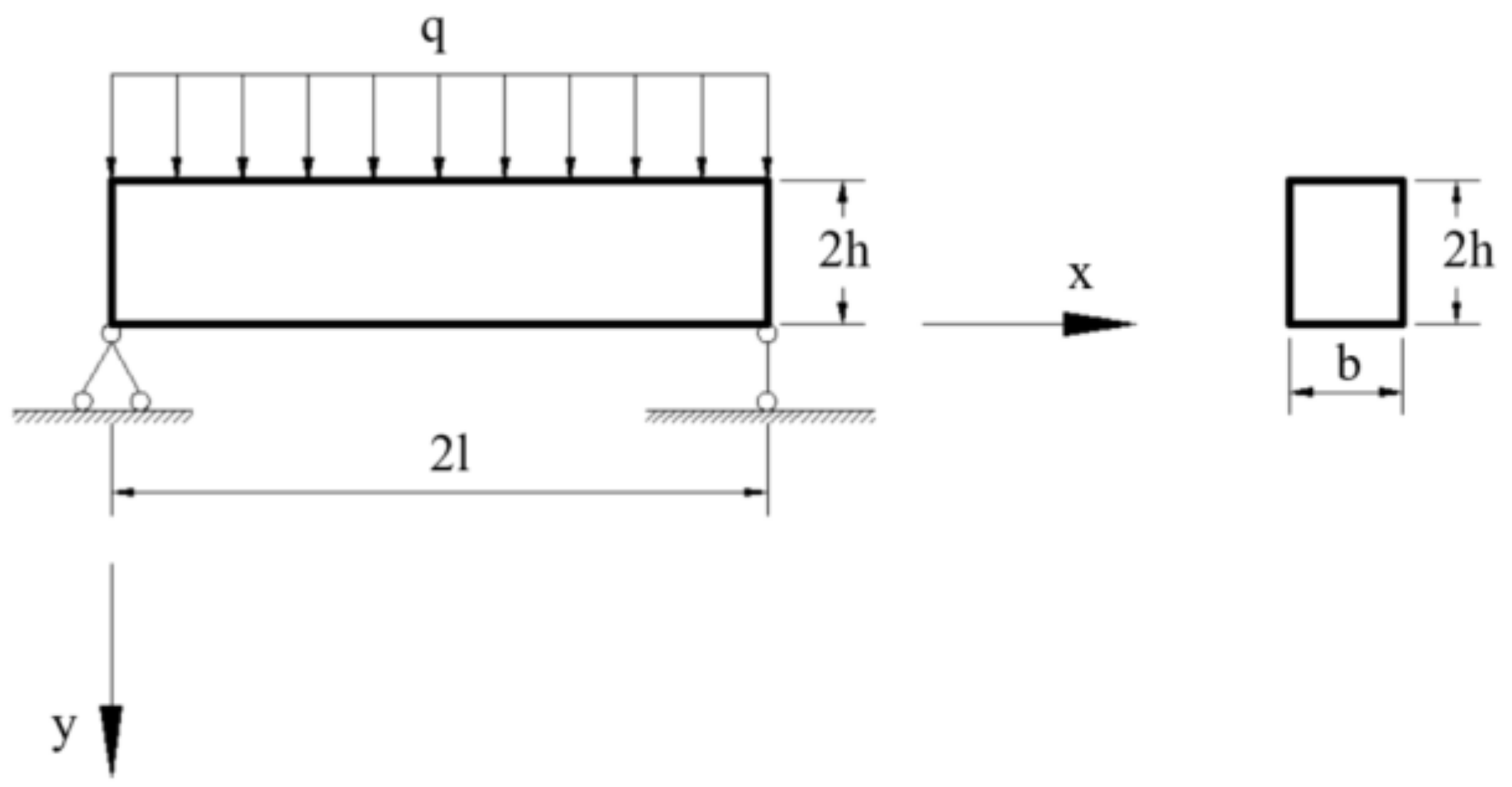


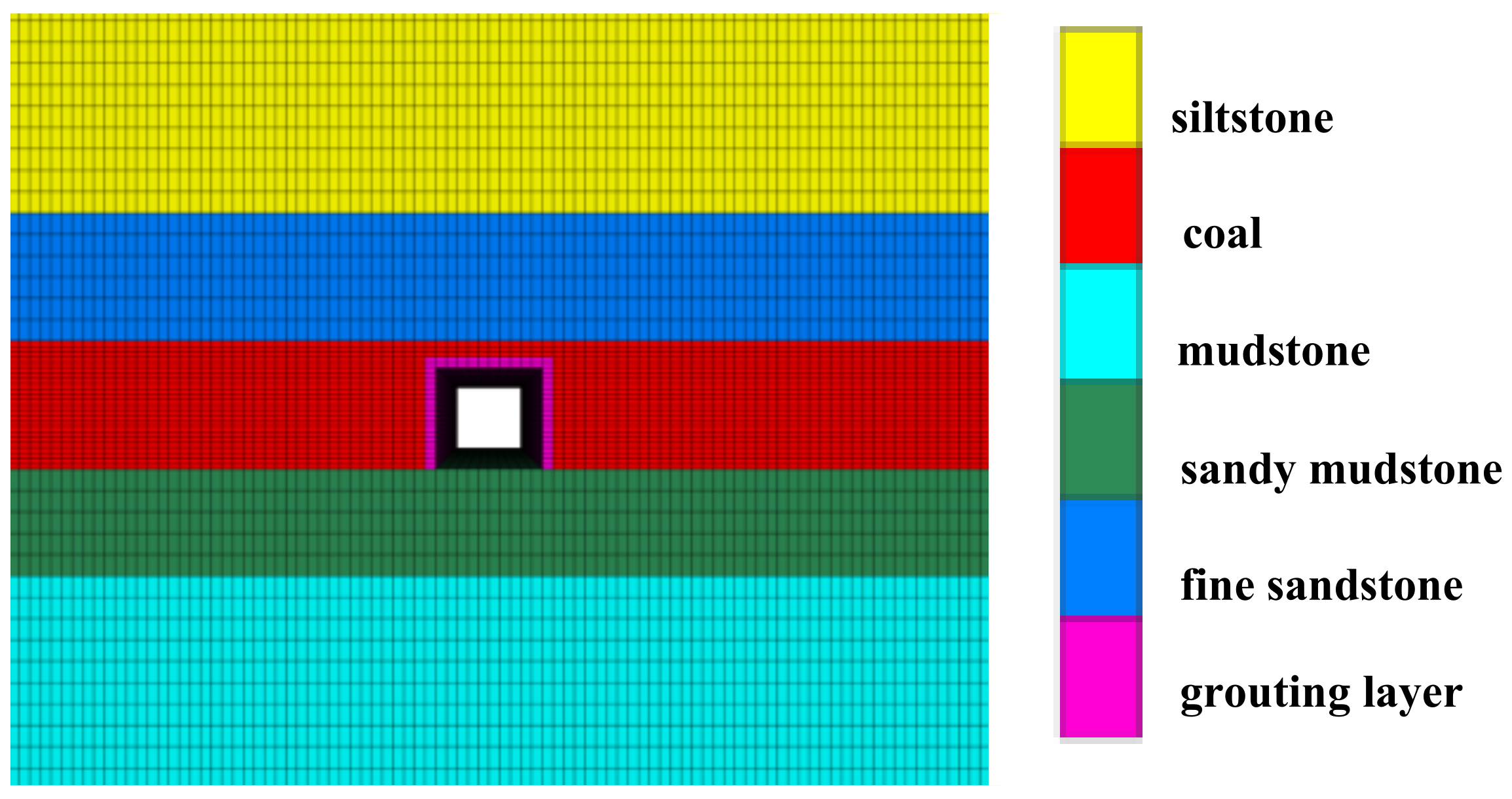
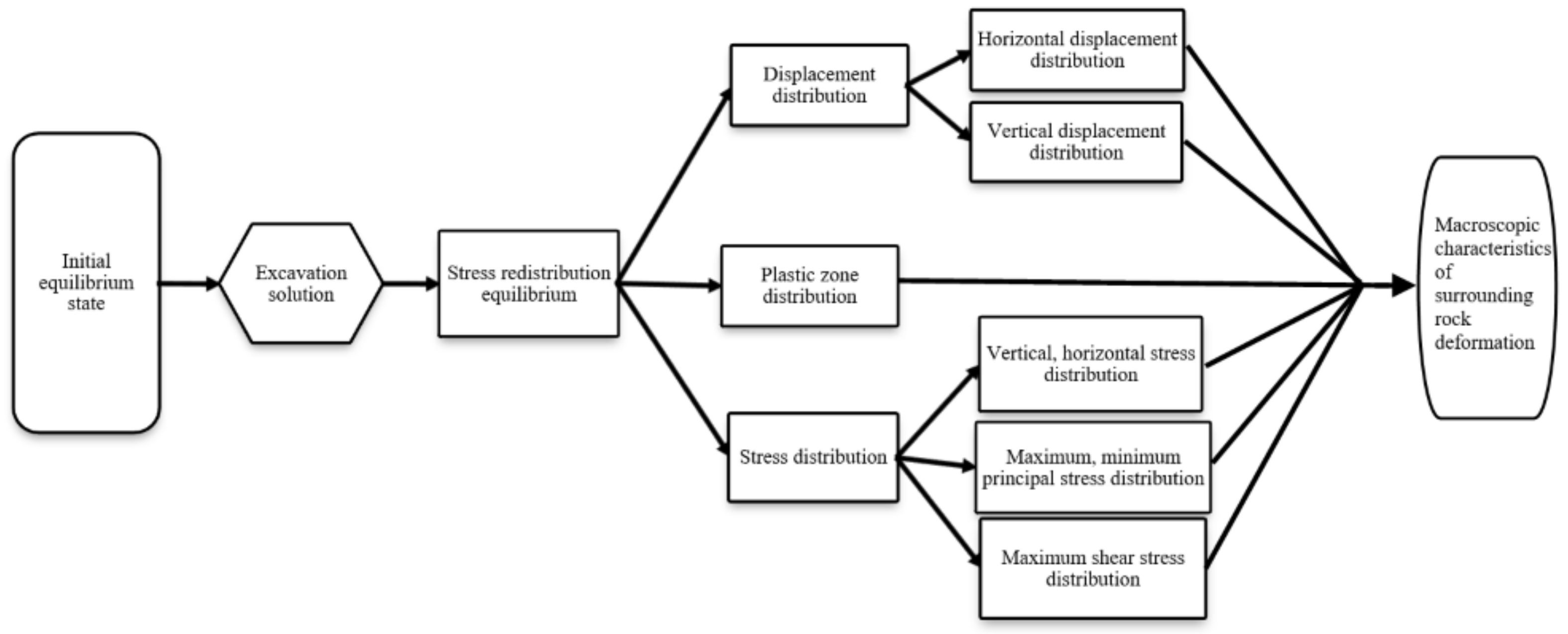


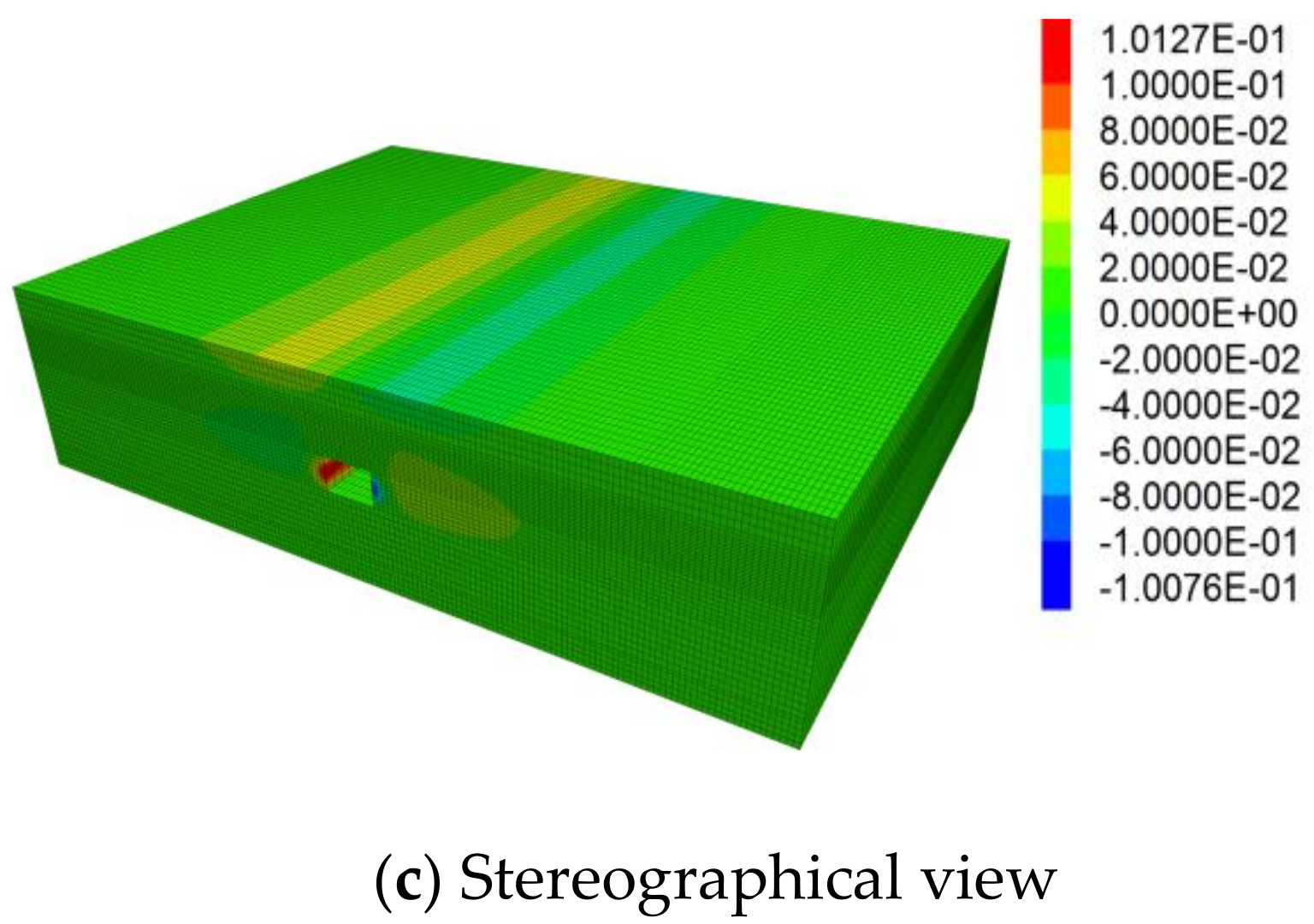




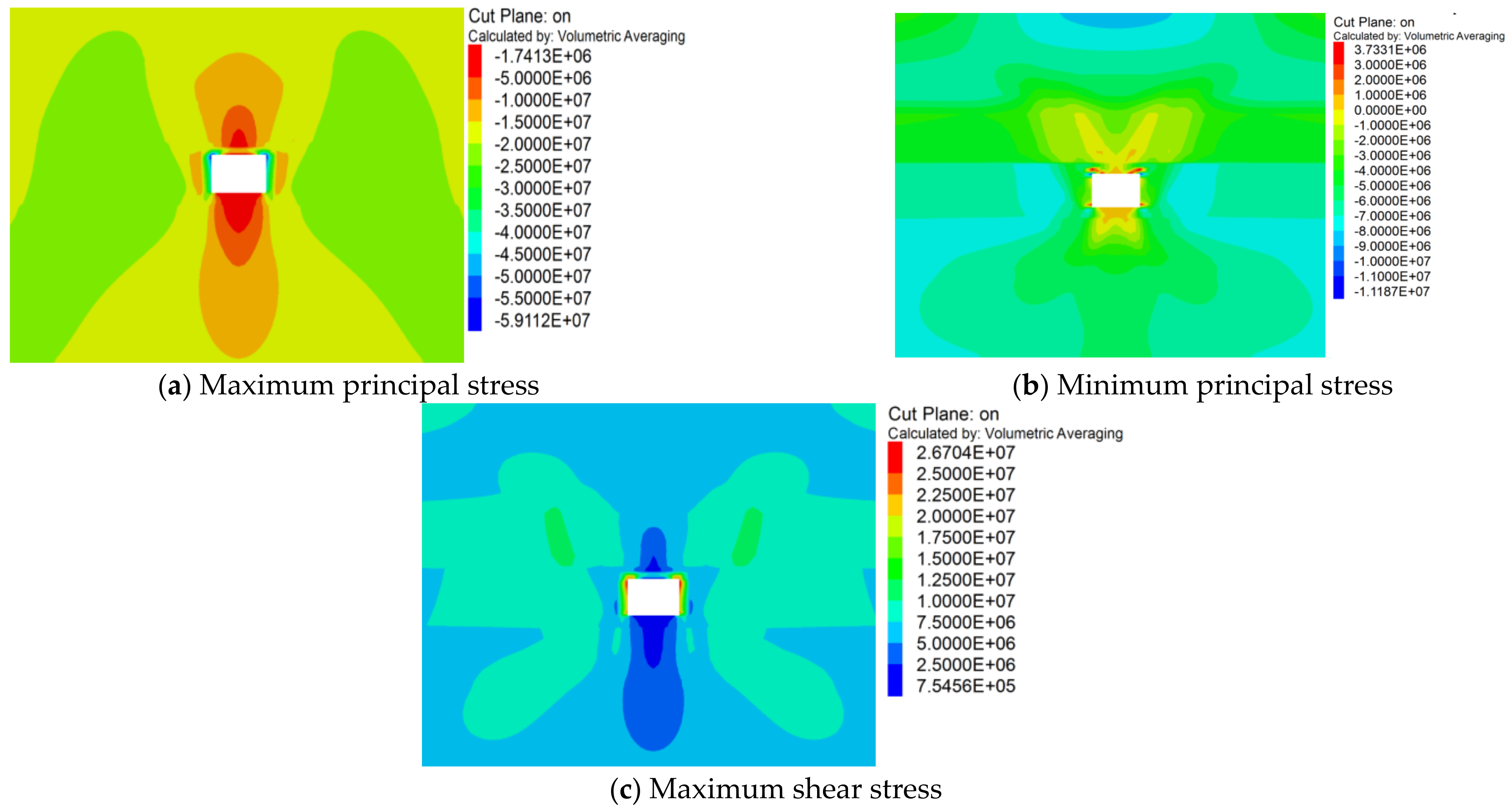


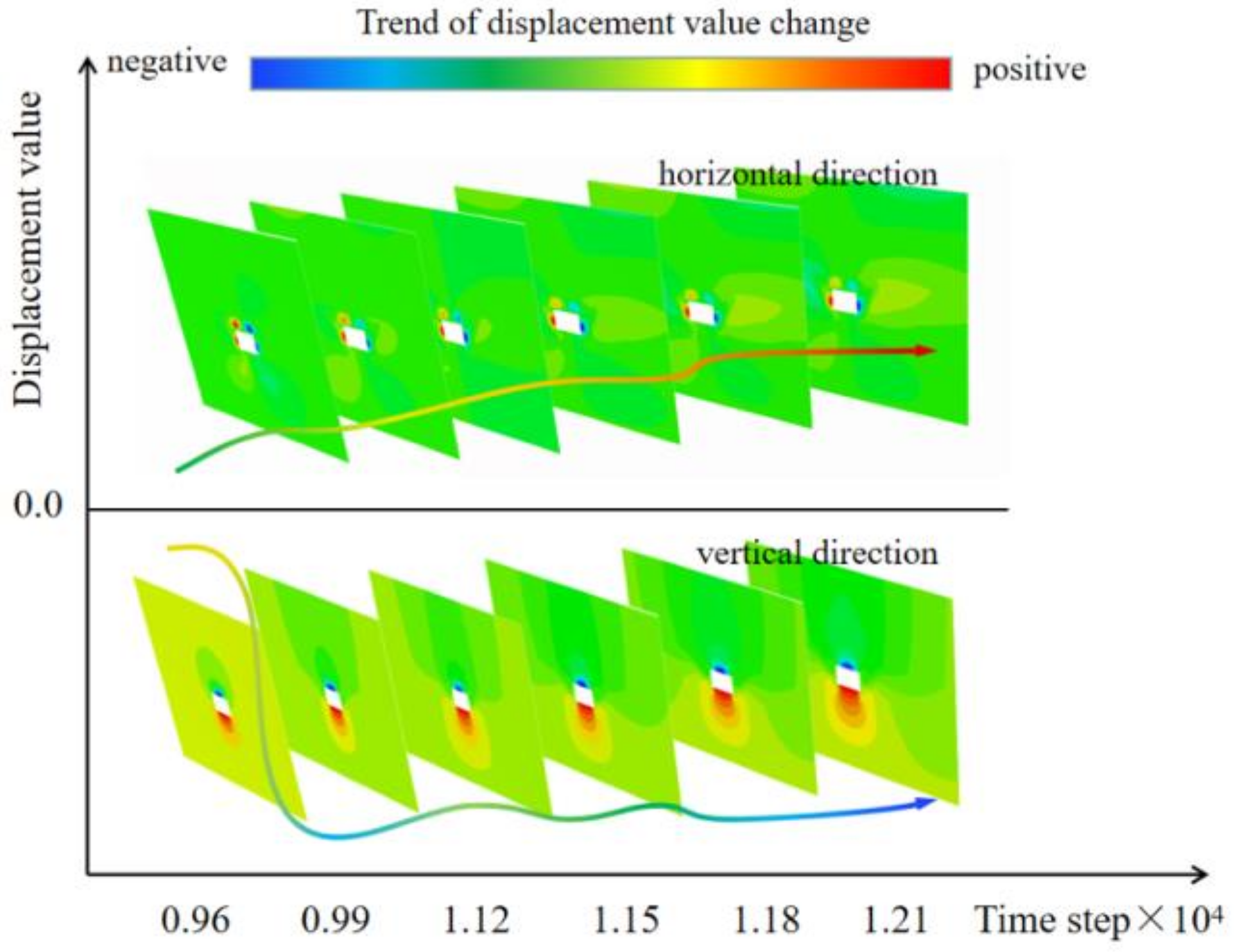
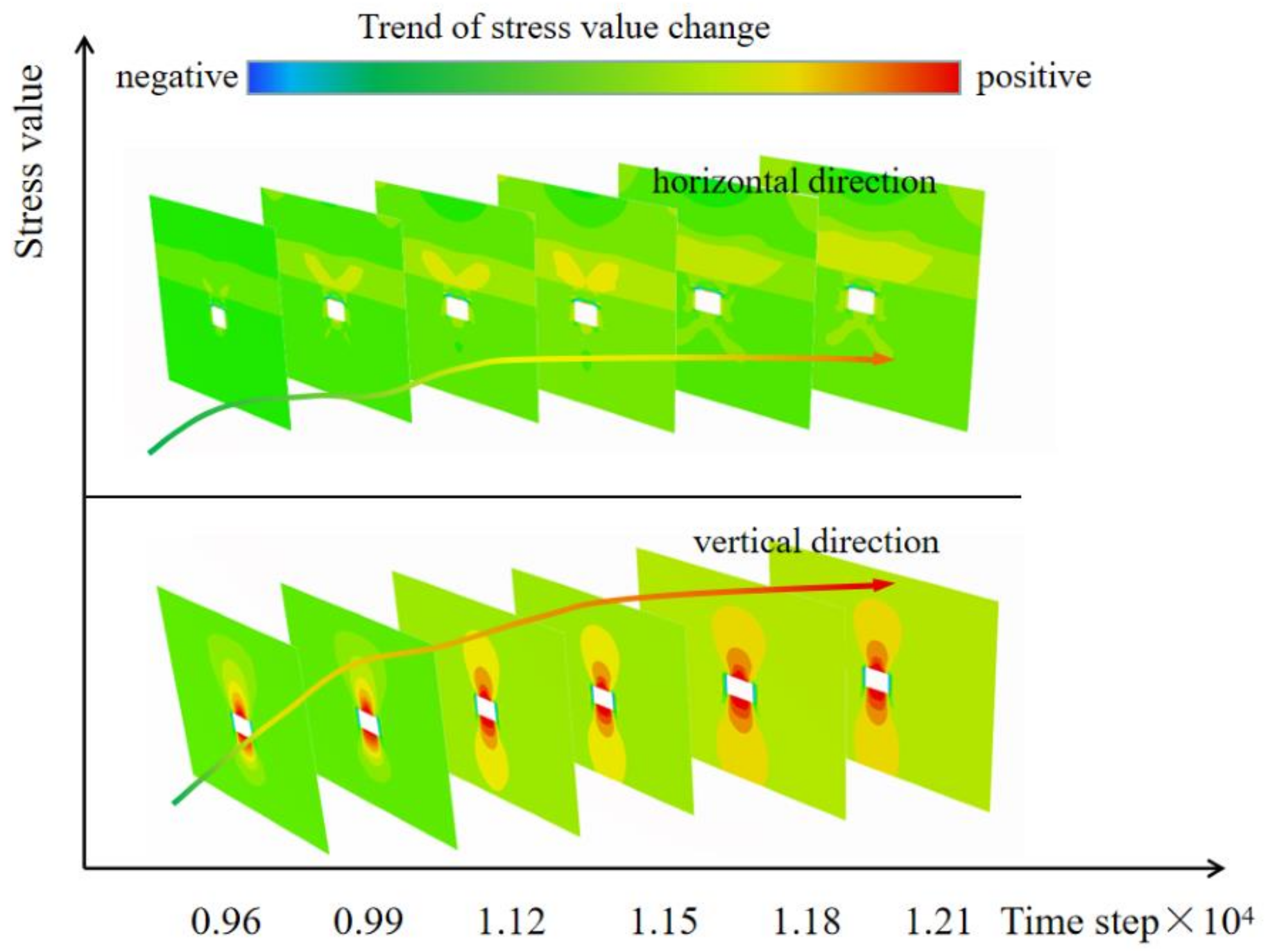
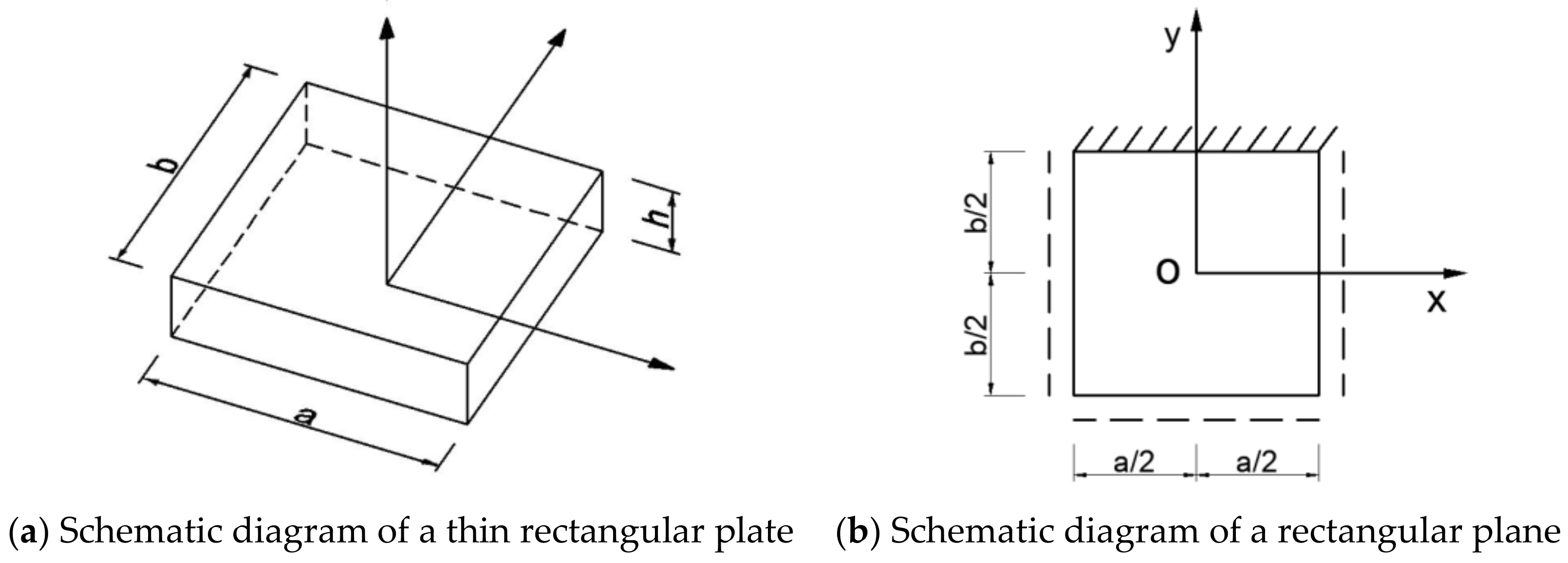

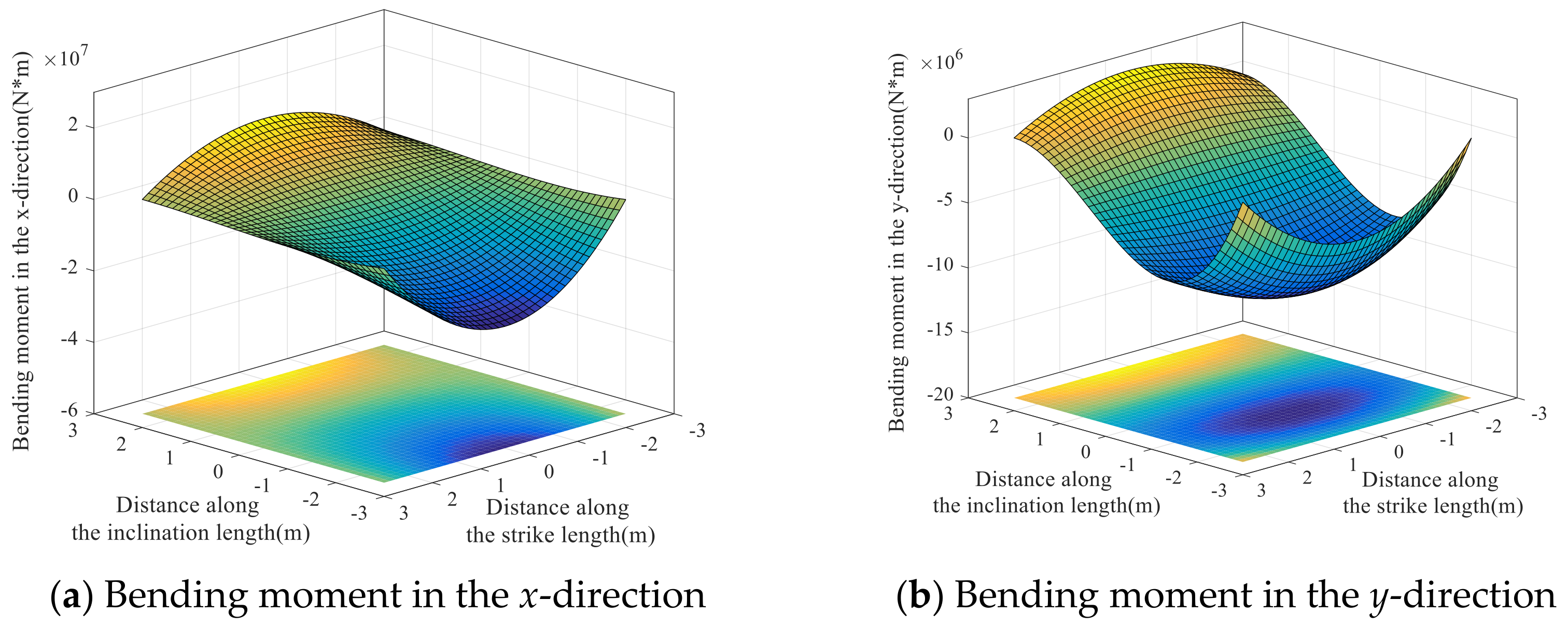
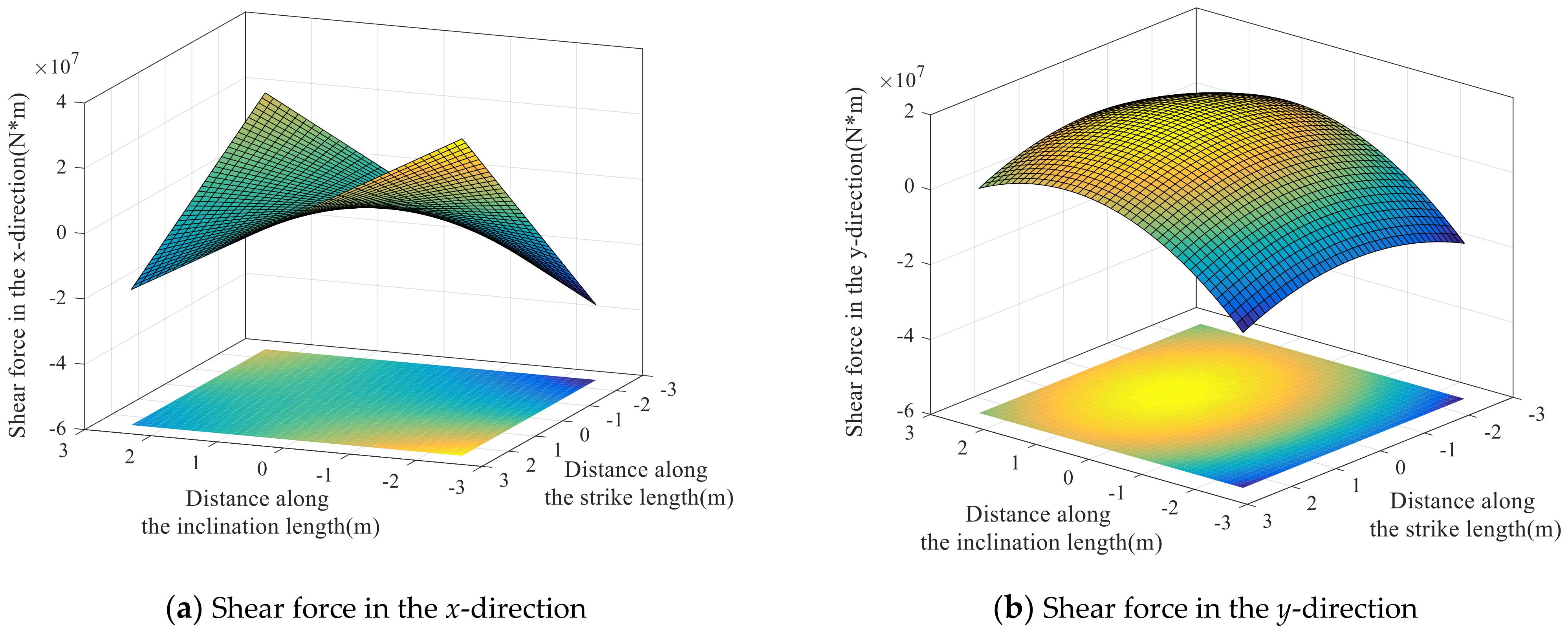
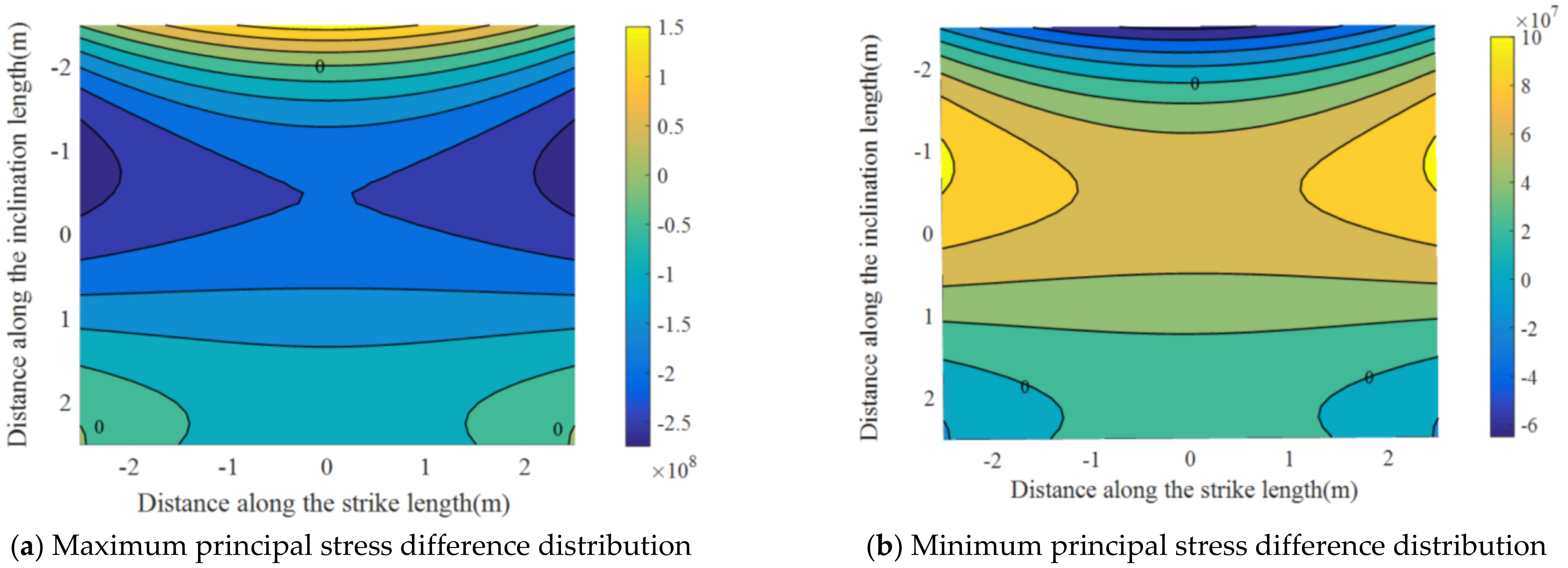
| Elastic Modulus E/GPa | Poisson Ratio μ | Compressive Strength /MPa | Tensile Strength /MPa |
|---|---|---|---|
| 0.85 | 0.21 | 19 | 1.17 |
| Rocks | Thickness/m | Density/(kg∙m−3) | Friction Angle/(°) | Modulus of Shear /GPa | Poisson’s Ratio | Tensile Strength/MPa | Cohesive Force/MPa |
|---|---|---|---|---|---|---|---|
| siltstone | 10.00 | 2400 | 36 | 3.73 | 0.25 | 1.78 | 1.75 |
| Fine Sandstone | 6.00 | 2580 | 33 | 3.25 | 0.16 | 3.48 | 3.46 |
| Coal | 6.00 | 1350 | 27 | 0.35 | 0.21 | 1.17 | 1.19 |
| Sandy mudstone | 5.00 | 2370 | 31 | 1.43 | 0.26 | 1.81 | 1.96 |
| Mudstone | 10.00 | 1750 | 32 | 1.21 | 0.26 | 1.71 | 2.05 |
Publisher’s Note: MDPI stays neutral with regard to jurisdictional claims in published maps and institutional affiliations. |
© 2022 by the authors. Licensee MDPI, Basel, Switzerland. This article is an open access article distributed under the terms and conditions of the Creative Commons Attribution (CC BY) license (https://creativecommons.org/licenses/by/4.0/).
Share and Cite
Wang, X.; Zhang, Y.; Zhang, Q.; Wei, Y.; Liu, W.; Jiang, T. Space-Time Evolution Characteristics of Deformation and Failure of Surrounding Rock in Deep Soft Rock Roadway. Sustainability 2022, 14, 12587. https://doi.org/10.3390/su141912587
Wang X, Zhang Y, Zhang Q, Wei Y, Liu W, Jiang T. Space-Time Evolution Characteristics of Deformation and Failure of Surrounding Rock in Deep Soft Rock Roadway. Sustainability. 2022; 14(19):12587. https://doi.org/10.3390/su141912587
Chicago/Turabian StyleWang, Xinfeng, Yiying Zhang, Qiao Zhang, Youyu Wei, Wengang Liu, and Tian Jiang. 2022. "Space-Time Evolution Characteristics of Deformation and Failure of Surrounding Rock in Deep Soft Rock Roadway" Sustainability 14, no. 19: 12587. https://doi.org/10.3390/su141912587




